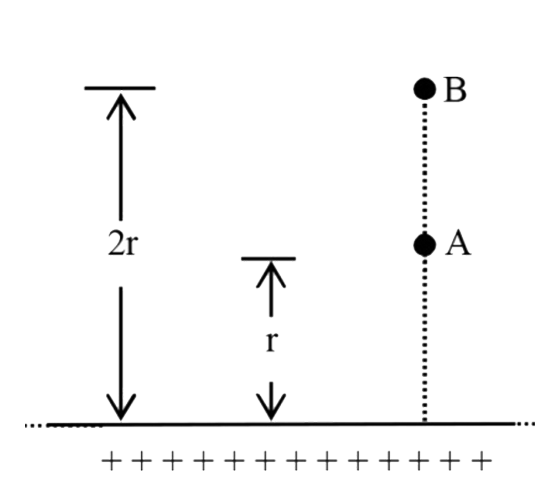An irregular shaped non conductor has some charge distribution. The potential difference between the two points A and B in it is V. If it is now enveloped in an spherical non conducting shell having uniform charge distribution in it, the new potential difference between the points (neglect any induction due to presence of charge)

is greater than V
is less than V
is equal to V
depends on the relative position of inner nonconductor vis-a vis outer non conducting
The correct Answer is:C
The field due to the uniformly charged shell at an inside point is zero.
Hence potential difference will not change
Topper's Solved these Questions
- TEST PAPERSBook:ALLENChapter:TEST PAPERSExercise:PAPER 3
Explore 100 Videos
- TEST PAPERSBook:ALLENChapter:TEST PAPERSExercise:Part-1 Physics
Explore 15 Videos
- TEST PAPERSBook:ALLENChapter:TEST PAPERSExercise:MATHS
Explore 18 Videos
- TEST PAPER 4Book:ALLENChapter:TEST PAPER 4Exercise:PHYSICS
Explore 45 Videos
- UNIT & DIMENSIONS, BASIC MATHS AND VECTOR Book:ALLENChapter:UNIT & DIMENSIONS, BASIC MATHS AND VECTOR Exercise:Exercise (J-A)
Explore 7 Videos
Similar Questions
Knowledge Check
The work done in moving a charge from one point to the other is 20J. If the potential difference between the points is 10V, the charge is:
A4.0CB2.0CC0.5CD1.0CThe potential difference of two end points of a conductor is 2 V workdone in supplying 0.1 charge from this conductor is
A0.1 JB0.2 JC2 JD1 JThe potential difference of two end points of a conductor is 2 V workdone in supplying 0.1 C charge from this conductor is
A0.1JB0.2JC2 JD1 J
Can there be a potential difference between two adjacent conductors carrying the same charge ?
View SolutionThe work done in moving a charge of 3 C between two points is 6J. What is the potential difference between the two points?
View Solution5 J of work is done in moving a positive charge of 0.5C between two points. What is the potential difference between these points ?
View SolutionA metal sphere with a charge Q is surrounded by an uncharged concentric thin spherical shell. The potential difference between them is V. If the shell is now given an additional charge Q, what is the new potential difference between them?
View SolutionAn infinitely long line of linear charge density λ is shown in the figure. The potential difference VA−VB between the two points A and B is

View Solution

